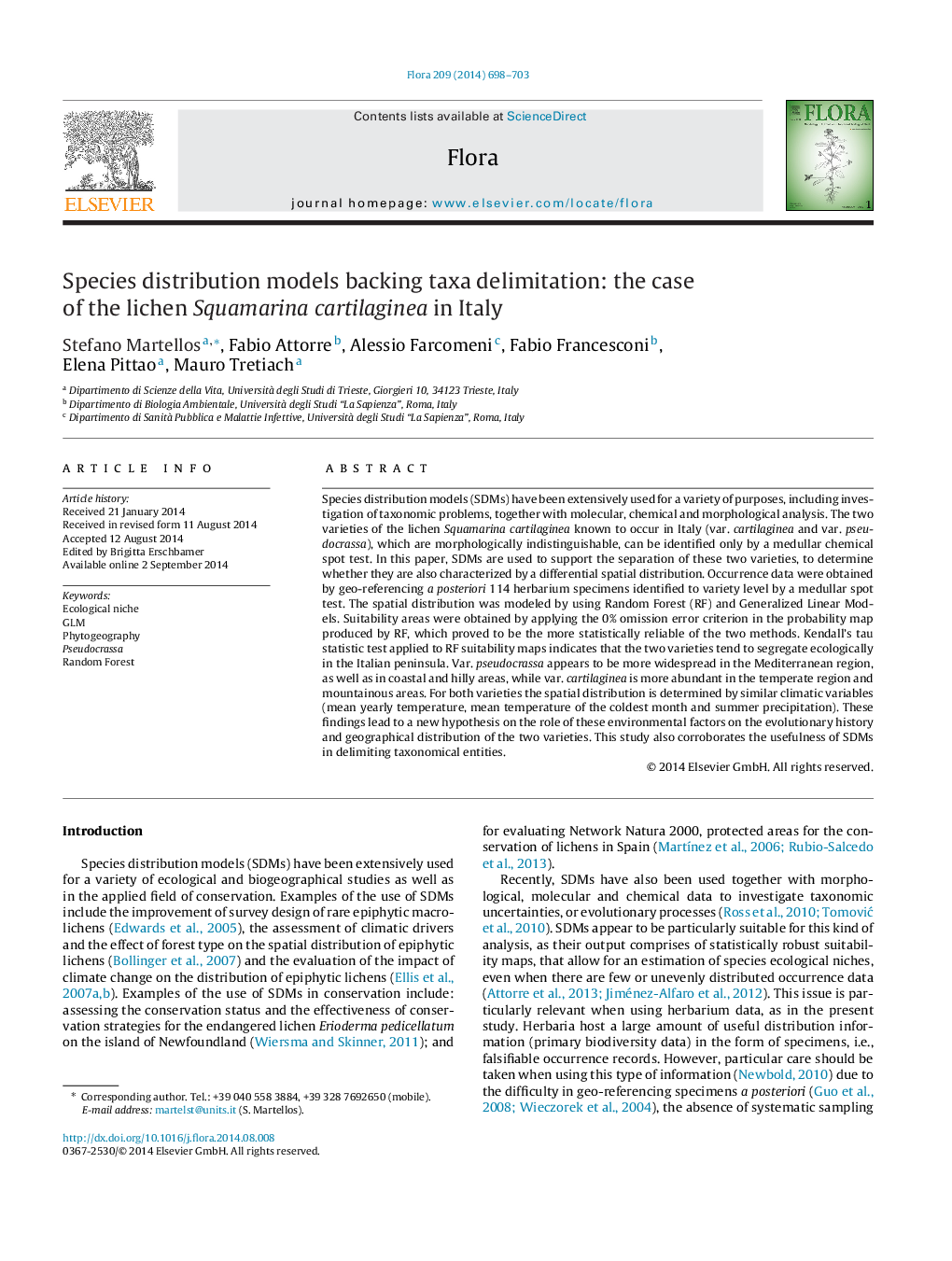| کد مقاله | کد نشریه | سال انتشار | مقاله انگلیسی | نسخه تمام متن |
|---|---|---|---|---|
| 2179459 | 1095051 | 2014 | 6 صفحه PDF | دانلود رایگان |

• Squamarina cartilaginea has two varieties in Italy, pseudocrassa and cartilaginea.
• Random Forest is used to model spatial distribution.
• Occurrence data were obtained geo-referencing a posteriori herbarium specimens.
• Kendall's tau test indicates that the two varieties tend to segregate ecologically.
• Spatial distribution models can be used in integrated approaches in taxonomy.
Species distribution models (SDMs) have been extensively used for a variety of purposes, including investigation of taxonomic problems, together with molecular, chemical and morphological analysis. The two varieties of the lichen Squamarina cartilaginea known to occur in Italy (var. cartilaginea and var. pseudocrassa), which are morphologically indistinguishable, can be identified only by a medullar chemical spot test. In this paper, SDMs are used to support the separation of these two varieties, to determine whether they are also characterized by a differential spatial distribution. Occurrence data were obtained by geo-referencing a posteriori 114 herbarium specimens identified to variety level by a medullar spot test. The spatial distribution was modeled by using Random Forest (RF) and Generalized Linear Models. Suitability areas were obtained by applying the 0% omission error criterion in the probability map produced by RF, which proved to be the more statistically reliable of the two methods. Kendall's tau statistic test applied to RF suitability maps indicates that the two varieties tend to segregate ecologically in the Italian peninsula. Var. pseudocrassa appears to be more widespread in the Mediterranean region, as well as in coastal and hilly areas, while var. cartilaginea is more abundant in the temperate region and mountainous areas. For both varieties the spatial distribution is determined by similar climatic variables (mean yearly temperature, mean temperature of the coldest month and summer precipitation). These findings lead to a new hypothesis on the role of these environmental factors on the evolutionary history and geographical distribution of the two varieties. This study also corroborates the usefulness of SDMs in delimiting taxonomical entities.
Journal: Flora - Morphology, Distribution, Functional Ecology of Plants - Volume 209, Issue 12, December 2014, Pages 698–703